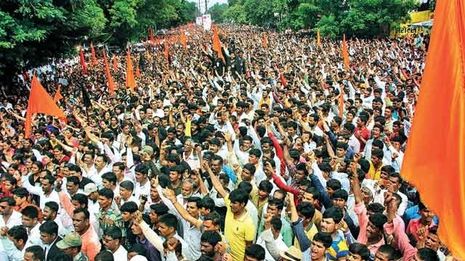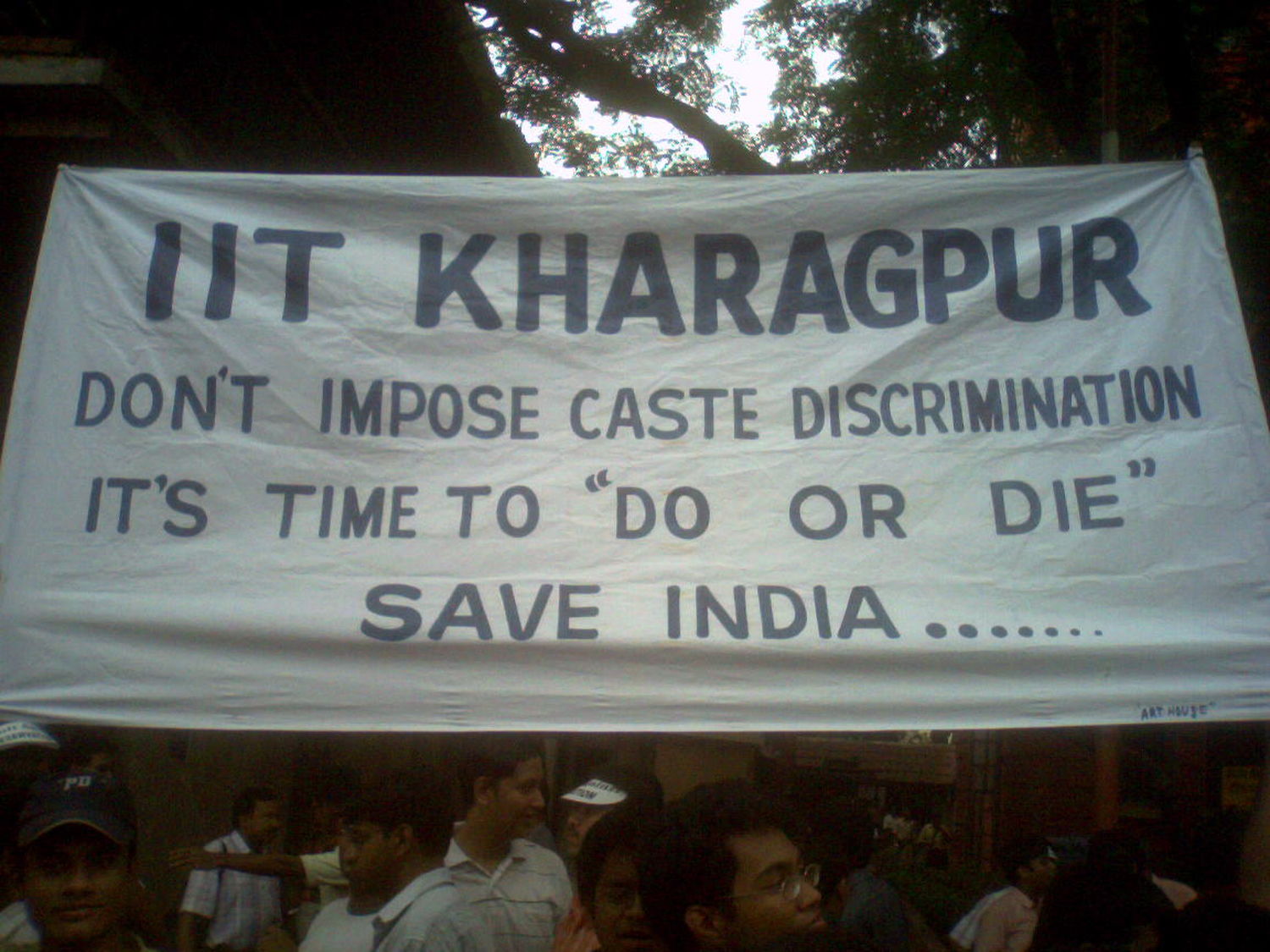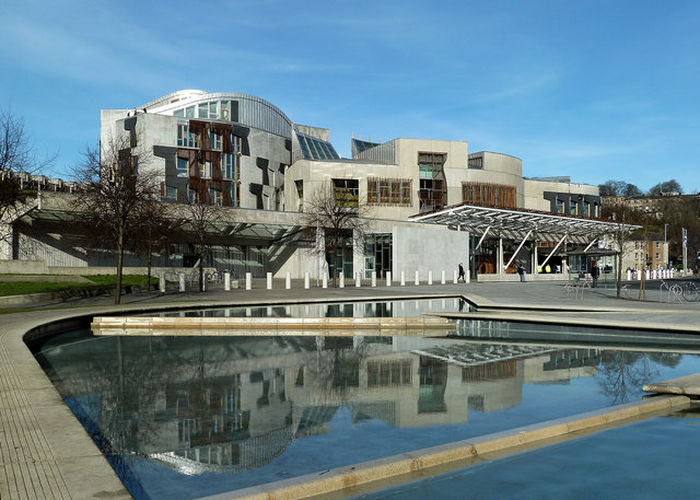Growing up in urban India, it can be easy to ignore casteism if you are an upper-caste savarna Hindu. I know this because I might never have had a personal encounter with caste if I didn’t have such an odd last name. Apparently unusual surnames make for a predictable conversation. In India, people will often first ask me if I am Muslim. Then they ask: “Where are you from?” I wheel out the explanation: my mom is from Madhya Pradesh and my dad is Gujarati. Then, always: “I didn’t know there is an Amin community in Gujarat.” In the privileged circles of modern India, caste still matters. My privilege means that my identity is only an interesting question, in a country where caste kills people. In a recent tragedy, Vikas Jatav, a 17-year-old Dalit, was killed by upper-caste men because he wanted to enter a temple. The effects of the socio-economic and cultural domination of the upper-castes, such as the Brahmin and Baniya communities, are deeply ingrained. Whilst lower caste groups form around 70% of India’s population, they remain grossly underrepresented in education and formal employment.
The same power structures that allow Brahminical supremacy to dominate at home also mean that the Indian diaspora – the people with the opportunity to emigrate – are largely from upper-caste backgrounds. But as Anupama Rao has observed, Brahmins frequently redefine this inherited privilege to talk instead about their “merit.” As a result, the caste structures which created these opportunities go undiscussed. The entrenched casteism in diaspora communities recently reared its ugly head in America, where a Dalit man employed by Cisco has filed a legal complaint following serious workplace harassment by upper-caste co-workers. The UK is also not immune to the biases of its diaspora population: Sudesh Rani, for example, suffered caste-based abuse in a supermarket, but the police did not know how to handle her case because they did not understand the nature of the discrimination involved.
"The UK is not immune to the biases of its diaspora population..."
The problematic ‘model minority’ label that the Indian diaspora benefits from partly arises due to the caste equation. As Dr Suraj Yengde has observed: “Brahmins in the West are in the habit of claiming their genetic merit. They had headway into education due to an early entry and a system devoted to excelling them in India. Once they become diaspora, they claim their minority status to become World Bank chiefs and Google heads.” Indians are a highly educated and accomplished diaspora worldwide: In the UK, the rate of employment amongst Indians is higher than amongst any other ethnic group. In the USA, 68% of Indian-born immigrants hold college degrees, and tech CEOs like Microsoft’s Satya Nadella and Google’s Sundar Pichai (both Brahmins) continue to make our engineering institutions proud. But the history enabling such accomplishments is something that the diaspora is deafeningly silent about.
The UK Government’s 2010 report on caste discrimination in Great Britain provided a litany of instances where casteism has come to the fore in recent years. For example, the report details how a 16 year old girl was bullied because of her caste but could not raise the issue with her teachers because she felt they would be unable to remedy the situation. Another example involves a Brahmin nursing home worker refusing to bathe an elderly resident because he belonged to the Ravidassia community. The list goes on. In 2015, Permila Tirkey managed to win the first-ever caste discrimination case in the UK. However, the Government’s refusal in 2018 to amend the Equality Act to include caste-based discrimination has made for a difficult and uncertain process in bringing such cases to court. Research by the Dalit Solidarity Network, a UK-based Dalit advocacy group, found that 85% of UK-based Dalits believed British-Indians continued to follow the caste system, and around 50% of them had experienced some form of caste-based discrimination.
"Clubbing casteism with these other grounds also diminishes the historic nature of the wrong. A distinct approach is clearly needed here."
Currently, there is a statutory obligation on the Government to bring in anti-caste legislation, but there is a serious lack of clarity as to how this will be done. The suggestion that caste can be dealt with by pre-existing protected characteristics such as ‘race’, ‘ethnicity’, or ‘religion’ is unhelpful. These categories do not represent the gravamen of the discrimination inflicted by upper-class groups, and in some ways the labels can be problematic: differentiating caste on such grounds arguably legitimises the notions of ethnic ‘impurity’ and socio-religious inferiority that Brahmins have used for centuries to oppress lower-caste groups. Clubbing casteism with these other grounds also diminishes the historic nature of the wrong. A distinct approach is clearly needed here. Another important issue is that the Equality Act is primarily focussed on professional contexts, which may limit its ability to address the social discrimination faced by lower-caste groups. For example, the 2010 Report discusses the case of Labour Councillor Ram Lakha. Lakha, who belongs to a lower-caste group, was discouraged from contestesting a South Asian constituency because of caste politics. When he was elected Mayor of Coventry, the Indian community broke with tradition. As Lakha said of his election: “The Indian community in Coventry always felicitates every new Mayor, however, till today they have not done this for me.”

Caste in India is a complicated phenomenon – amongst other things, it is perpetuated by systemic problems in education, vote-bank electoral politics, communal resentment, and the power dynamics created by acute economic inequality. The idealist can believe that there is still a national commitment to fighting caste: Article 15 of the Constitution of India demands it, and a slew of Government and NGO programs are geared towards this cause. The legacy of Dr B.R. Ambedkar, who was a key member of the Constitutional Assembly and a revered Dalit jurist, remains strong in contemporary Indian politics. But the rhetoric rarely bears semblance to reality: Prime Minister Narenda Modi’s anti-caste messaging is in sharp contrast to the rising rates of violence against lower-caste groups and even the tone of some members of his own party.
What makes the situation in the UK so appalling is that much of the Indian diaspora militarised against proposals to amend the Equality Act 2010 with bizarre stridency. The National Council of Hindu Temples UK, for example, called the planned amendment a “hate crime against Hindus.” Other groups denied the existence of such discrimination in the UK and have also argued that casteism is a product of colonialism that the British are seeking to blame Hindus for. Amidst all this pressure, Theresa May went back on her promise to enact anti-caste legislation.
There is truth in the notion that colonialism has a complex relationship with caste. For example, legislation such as the Criminal Tribes Act 1911 was used to legitimize large-scale police surveillance and control over communities like the Kuruvars of Tamil Nadu. But the community’s historical relationship with the justice system has evolved. In modern-day independent India, the Kuruvars are systematically oppressed and tortured en masse by the Tamil Nadu police force. Refusing to accept our responsibility for the continuation and development of the caste system in independent India’s culture is thus a hopeless and unacceptable stance. Scholars of pre-colonial India have also noted that oppressive caste structures, particularly in the varna form, existed in Hindu practice long before the British arrived, even if they were exploited and exacerbated by colonialism. As Ananya Chakravarti notes, the post-colonial analysis of caste as a structure ‘imposed by the British’ is often a function of Brahminical dominance in Western academia. Accepting this reality does not absolve the British of their devastating contribution to caste in India, but it does bring an important point to light: by underplaying its historical exploitation of the caste system, the upper-caste is able to defend and consolidate its privileged position, both in the diaspora and within India as well.
"... caste is something that many families will be keen to avoid criticising or even discussing meaningfully."
When I read about the prevalence of casteism abroad, I am struck by how similar its results can be to the abuse received by lower-caste groups in India. In the Cisco case, for example, the defendants allegedly questioned the victim’s competence by claiming he was not from ‘the main list.’ In India, this insult is regularly used to undermine the credibility of those who benefit from affirmative action in education. It is extremely depressing that even thousands of miles away from India individuals cannot seem to dispossess themselves of their casteist notions. When the diaspora has the opportunity to change but refuses to do so, how can India - where caste is reinforced by economic, political, and cultural systems - get rid of this ideology?
I am hopeful that my generation of British-Indians would find casteism abhorrent if they knew its history and contemporary impact, but education on this subject is unfortunately inaccessible in the UK. The British education system has rightly been criticised of late for its failure to educate students about the lasting legacy of colonialism, and while the UK’s contributions to caste should certainly be acknowledged, the problem does not end there. Even those who grew up in more affluent, educated parts of India are often no better off: 20% of urban Indian households openly claim to practice ‘untouchability,’ one of the most abhorrent forms of caste discrimination. Even today, Dalit and Adivasi students are routinely stigmatised by teachers as ‘undeserving’ and not worth teaching. A generation or two ago, these practices were even more entrenched than they are today. In diaspora families where children are not taught about the evils of caste and adults are often, at best, indifferent, who is to start the conversation on this subject? One thing is clear: The incidences of caste-based bullying in schools and even tragic caste-related violence amongst young people, detailed in the 2010 Report, show that casteism is being taught to British-Asian children. The education system must respond to this - if nothing else, an honest discussion about Britain’s contribution to caste will help many students question what they are being taught at home. There is a lack of clear data, but estimates suggest that there are now at least 250,000 Dalits in the UK in a larger community of over 815,000 Hindus. When the diaspora consists mainly of individuals who have benefitted from their upper-caste privilege, caste is something that many families will be keen to avoid criticising or even discussing meaningfully.
"... it is important not to forget that caste discrimination manifests itself in a variety of forms across different socio-economic spheres."
Bollywood’s lack of engagement with caste is another reason for the absence of cultural attention on this subject. Upper-caste families and heroes are the norm in Indian cinema, and diaspora-focussed films like Dilwale Dulhania Le Jayenge and Kabhi Khushi Kabhie Ghamdo not attempt to start any conversation on caste and privilege. Instead, they celebrate the diaspora’s ability to embrace “Indian culture” abroad. Even in movies like Lagaan and Swades, where caste is brought to the fore, the films’ portrayals make it easy to see caste as a purely historical problem or an issue endemic to rural India. The latter film also liberally endows Shah Rukh Khan’s American desi character with ‘NRI (non-residential Indian) saviour’ status, perhaps reinforcing this notion that diasporic communities do not carry India’s dirty laundry with them. The tragic circumstances these films bring to the audience’s attention are very much a reality, but it is important not to forget that caste discrimination manifests itself in a variety of forms across different socio-economic spheres. We do South Asian communities an injustice when we blind ourselves to that fact and stay quiet about it.
The issues relating to casteism in the UK have been too long ignored and treated with inexplicable arrogance by upper-caste groups. In rejecting reform, the Government has failed to adequately protect members of lower-caste groups and allowed immigrants to be oppressed by the same structures they thought they had left behind in India. Whilst the UK’s education system must be honest about the legacy of the country’s contribution to caste structures, the Indian diaspora - and particularly the upper-caste - have an obligation to educate themselves and their families on the realities of caste and the privileges they have benefitted from. One standout film in recent years has been Anubhav Sinha’s Article 15, an investigative drama that follows a city-bred detective named Ayan, played by Ayushman Khurrana, as he investigates a brutal crime in rural Uttar Pradesh. The film is nuanced in its depiction of caste as an institutional and cultural malaise that underlies all aspects of Indian society. When confronted by the local police department’s incredibly casteist culture, Ayan, who until recently was unaware of his own caste status, can’t help but scream: “What the f***!”. This moment should be our collective aspiration. India and its diaspora cannot be a better community unless more of those amongst us share Ayan’s anger and act on it.


